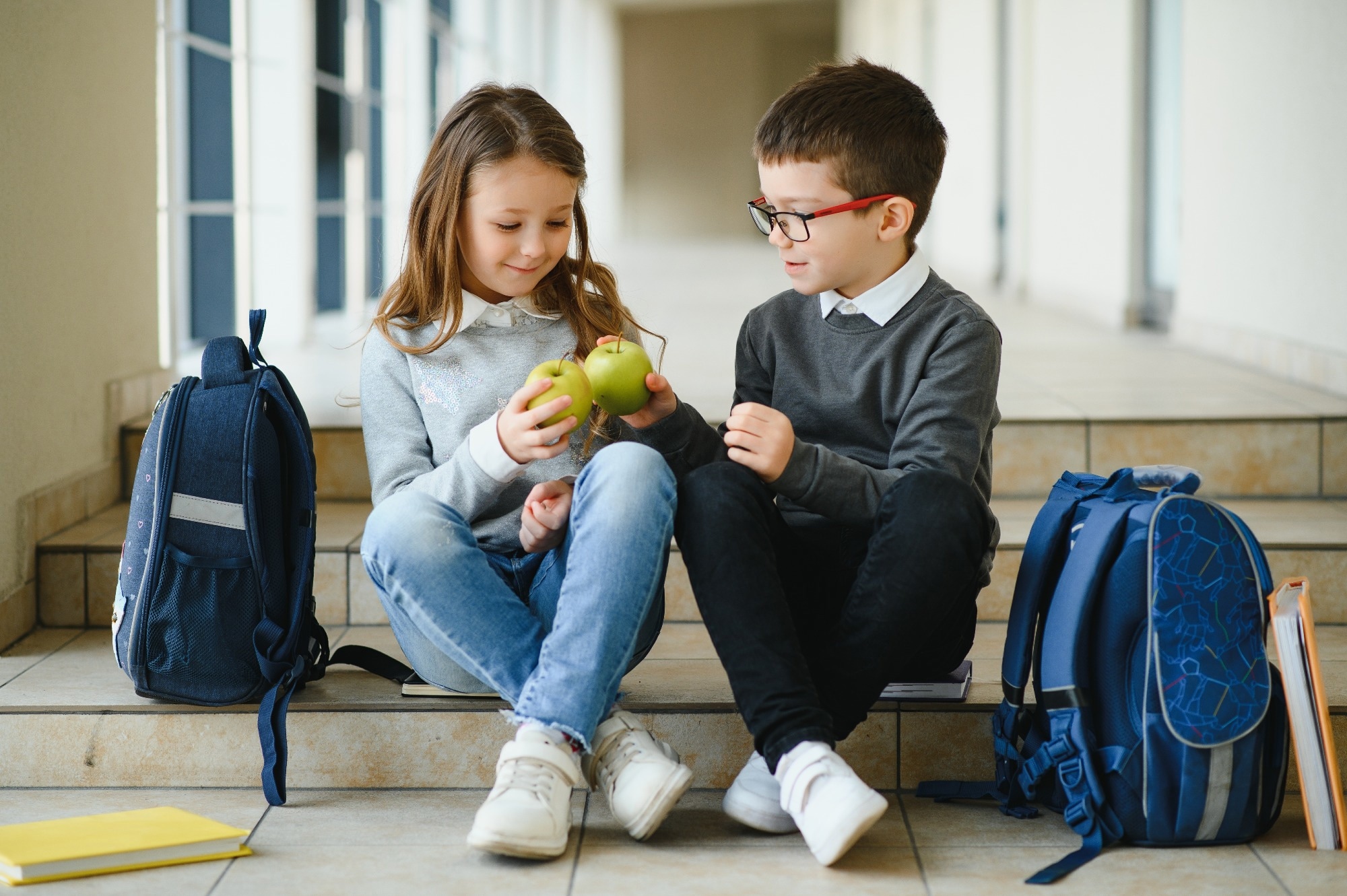In a recent study published in Scientific Reports, researchers investigated whether providing fruit to children in mixed elementary and secondary schools boosted academic performance.
 Study: The effect of free school fruit on academic performance: a nationwide quasi-experiment. Image Credit: Hryshchyshen Serhii/Shutterstock.com
Study: The effect of free school fruit on academic performance: a nationwide quasi-experiment. Image Credit: Hryshchyshen Serhii/Shutterstock.com
Background
Norway mandated that all students receive one piece of fruit daily between 2007 and 2014 to boost learning results by improving diets. The complementary fruit program increased the mean fruit consumption among insured children by around 30% while decreasing unhealthy snack intake among low-income youngsters.
Fruit consumption is linked to higher academic success and can help avoid chronic illnesses, boost attention in school children, and lower negative behavior that hinders learning conditions.
About the study
In the present study, researchers examined the effects of Norway's free school program on academic performance.
The administrative data obtained on test reports before, during, and after the law's implementation enabled the national quasi-experiment. Data from the population registry on the sociodemographic characteristics of parents enabled targeted analysis of a subsample of boys with poor sociodemographic status (pupils with possibly low fruit consumption and below-average performance).
Students receiving fruit free of charge served as the intervention group, while ineligible students (such as those in exclusively elementary schools) served as controls.
The researchers incorporated population registry information on the pupil's sex and parents' nationality, education, and income in pre-registered covariable-adjusted analyses.
Furthermore, the team performed modeling adjusted for the percentage of students excused from the exams (or otherwise absent), the count of students registered at each school for the assessments, and municipality rurality/centrality by year. In addition to fifth-grade assessments, the researchers analyzed eighth-grade exam data.
In the exploratory studies, the team obtained additional data on tenth-grade exams to improve understanding of the findings.
The national-level assessment datasets (Reading, English, and Mathematics) included all registered students in fifth (n=790,242) and eighth (n=798,869) grades between 2007 and 2019 and all students in ninth grade between 2010 and 2019 (only Reading and Mathematics).
Students were aged 9.0 to 10 years during the fifth-grade national assessments, 12 to 13 years during the eighth-grade assessments, and 13 to 14 years during the ninth-grade assessments.
The team obtained exam score data for exploratory assessments from 954 Norwegian schools, covering almost 90% of students in the nation.
The information was derived from test scores in English, Norwegian, and Mathematics between 2002 and 2019, administered after the school year in tenth grade when the students were aged between 14 and 15 years.
Results
In assessments of fifth-grade test results, the fruit intervention led to a modest drop in test scores among eligible vs. non-eligible students in the subset and the total intervention group population.
Increasing exposure to free fruit by one was related to a 0.2 drop in assessment scores in the subset of socioeconomically deprived boys compared to controls. The estimated score decline compared to controls was 0.1/year of exposure among all fifth-graders.
Any exposure, calculated as the weighted mean of exposure levels, was related to a 0.7-point decline in assessment scores in the subset and a 0.5-point decrease in test scores for the entire sample. The phase-out coefficients, measuring exposure to no-charge fruit in non-recent times, were equally negative, albeit to a lesser extent and with a significant level of statistical uncertainty.
The team observed similar findings for various impact model parameters. The results of the pre-registered covariable-adjusted analysis followed the same trend as the primary analysis.
A study of eighth-grader data revealed no beneficial effects of the intervention and a negative correlation between the duration of complementary fruit exposure and assessment results for the subset and the complete sample.
Exploratory studies of tenth-grade exam data produced identical results to the original analyses, while sensitivity tests either failed to identify any effect or showed a negative trend.
The pre-policy evolution of exam results among tenth-grade students indicated a reasonably similar trend between the intervention and control groups of schools. The patterns were parallel, with variations observed by varying free fruit exposure.
As the primary analysis, the regression analysis revealed negative impacts with a 0.01 loss in academic grades per one-year exposure. The supplementary analysis findings showed no beneficial impacts with only estimated negative effects.
The additional analysis included ninth-grade assessment scores and only one exposure term rather than the phase in-phase out, within-municipality assessments, and intra-subject analysis for a subset of the information when possible.
Conclusion
Overall, the study findings showed that the Norwegian legislation forcing schools to distribute free fruit to students had no positive effect on academic achievement.
The result might be due to the policy's poor implementation, a minor influence on students' diets, or Norwegian students' already strong baseline nutritional status. The program may have had unintended consequences, such as decreased teaching and learning time.
The study findings indicate that governments and educational institutions should be careful when expecting academic gains from nutritional initiatives since they may be context-sensitive and ineffective in situations with limited dietary challenges.